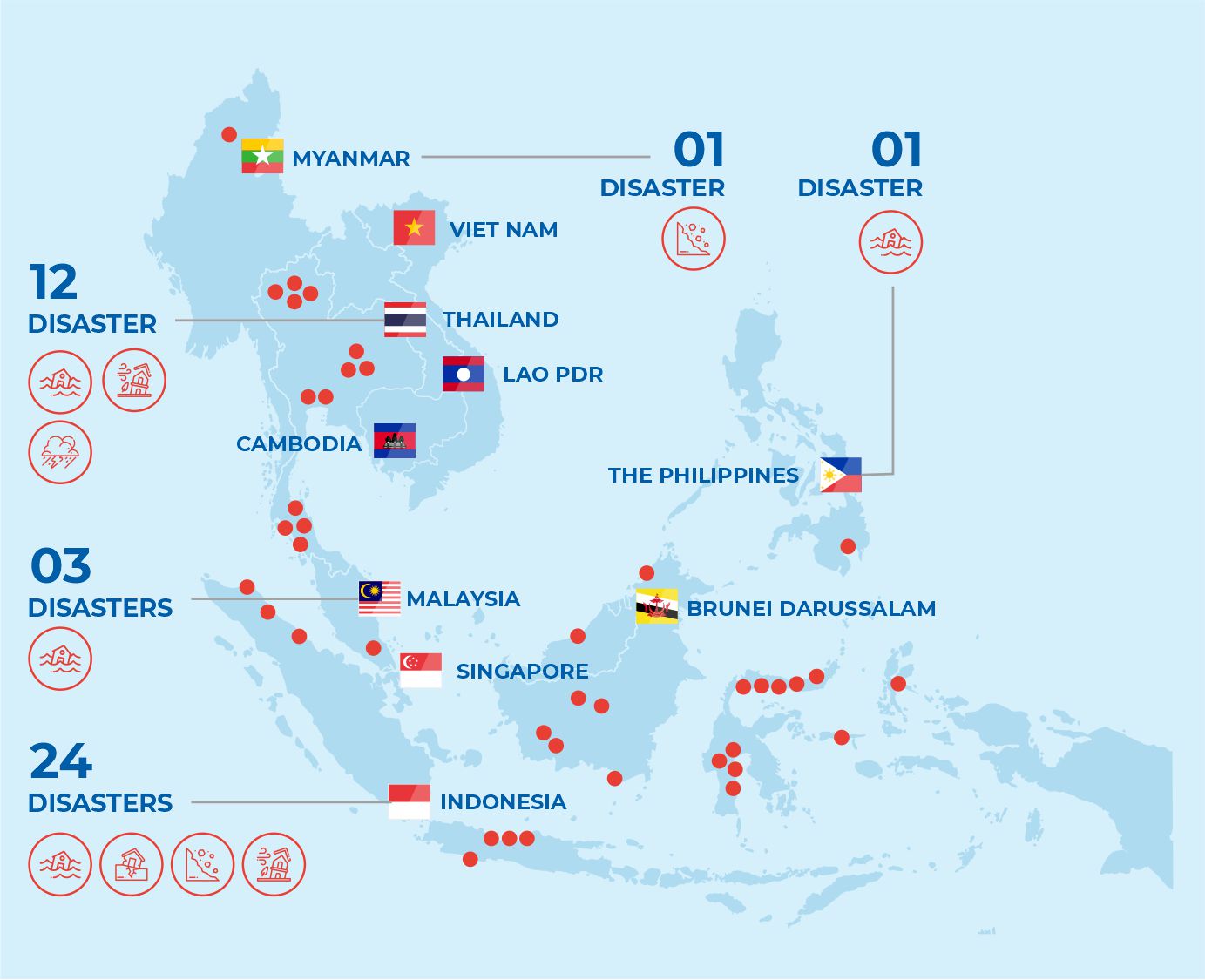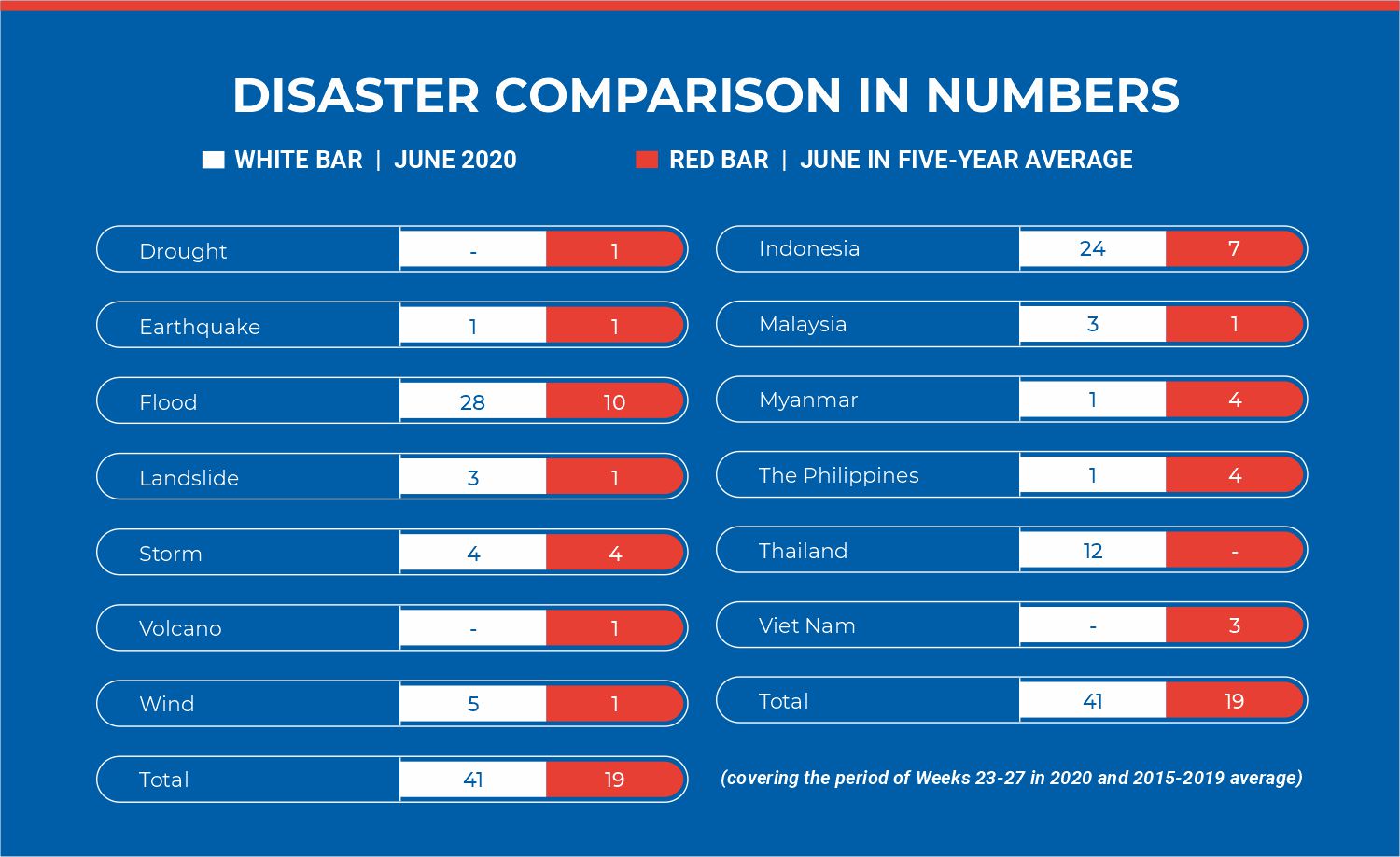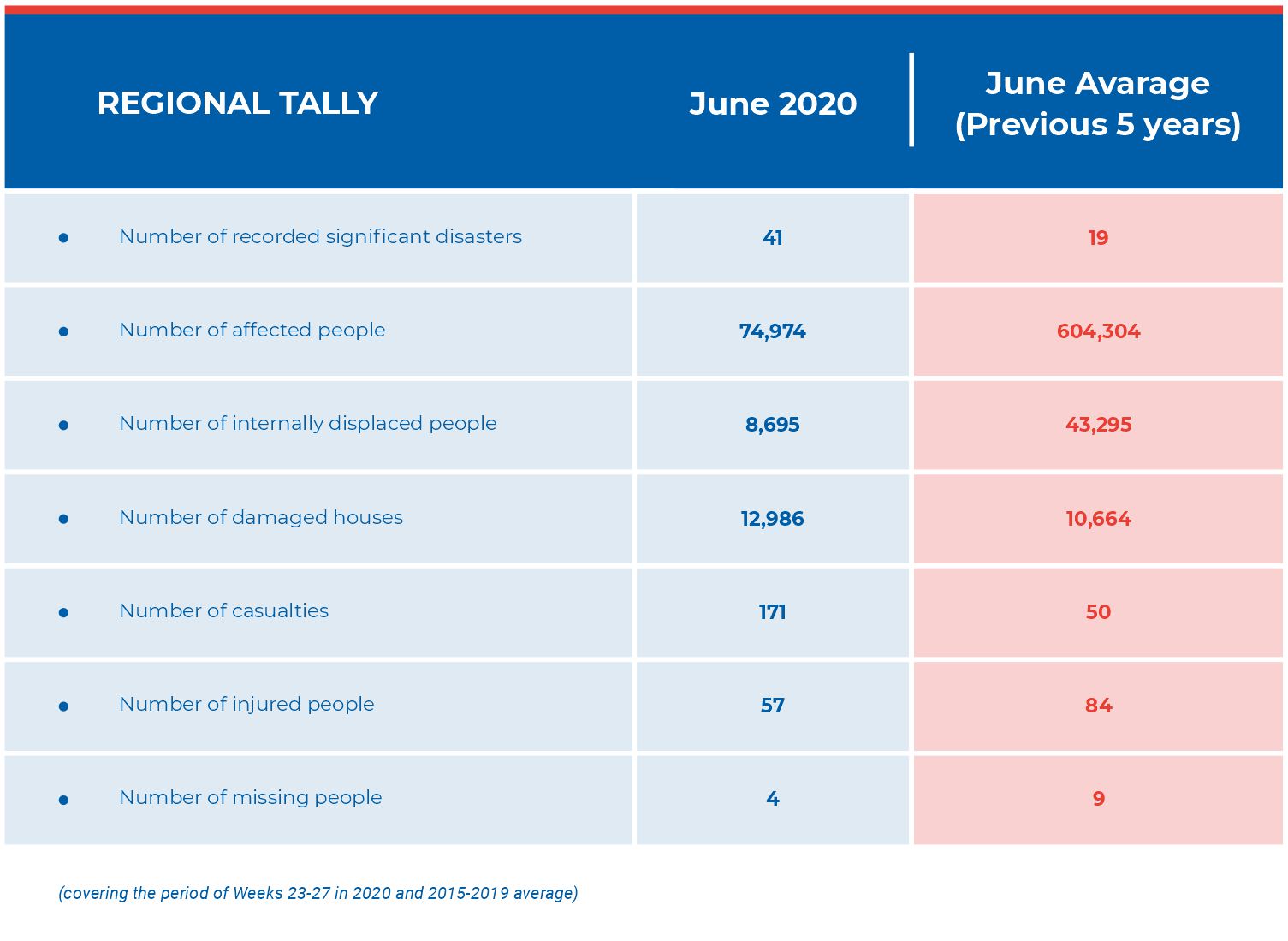
MONTHLY DISASTER REVIEW AND OUTLOOK
JUNE 2020 | DISASTER MONITORING & ANALYSIS
(DMA) UNIT, AHA CENTRE
GENERAL REVIEW OF JUNE 2020
A total of 41 disaster events were recorded for the month of June 2020, which was a little lower when compared to May 2020, however, more than double the June average for the previous five years. Despite this increase, there was a significant overall decrease in the number of affected people (around 9 times less), internally displaced, injuries and missing persons recorded. However, increases to the number of damaged houses and casualties (more than threefold) were also reported. A majority of disasters recorded were flooding events (28, or almost 70%); with 20 out of those 28 occurring in Indonesia. This could be attributed to the prevalence of southwest monsoon conditions in the ASEAN region since late May, as noted by the ASEAN Specialised Meteorological Centre (ASMC). Other disasters for June 2020 included an earthquake, three landslides, four storms, and five other wind-related hazards. The recorded casualties were mainly attributed to a landslide event in the Hpakant Township of Myanmar. This landslide was reportedly triggered by heavy rain that caused the bank of the Laku creek to collapse, setting off a fatal wave of mud and torrents of water into the area used by locals to mine for jade.
From a Geophysical perspective, there was a total of 25 significant earthquakes (≥ M5.0) reported for June 2020 across the region. Volcanic activity was observed for Dukono and Semeru Volcanoes in Indonesia throughout June, however the Alert Level remained at 2. Volcanic activity was also reported for Indonesia’s Sangeang Api and Bulusan and Taal in the Philippines. The 21st of June also saw an eruption of Indonesia’s Mount Merapi, located on the border of Central Java and Yogyakarta. The eruption recorded an amplitude of 75mm and a duration of 100 seconds, and saw ash clouds reaching 8,968m above sea level, exposing 184,273 people within a 10km radius to the ash. However, no casualties were reported as a result of this eruption.
SEASONAL OUTLOOK
During July 2020, wetter conditions (above-average rainfall) for most of the equatorial region are forecast. The largest positive anomalies (wetter conditions) are expected over the coastal equatorial regions. For Mainland Southeast Asia, below-average rainfall is forecast over northern Viet Nam, northern Philippines, and coastal Myanmar. This pattern of below-average rainfall broadly follows the coastal regions between 15°N to 20°N latitudes.
The prevailing Southwest Monsoon conditions (rainy conditions in the northern ASEAN region and dry in the southern region) that have been in effect since late May are expected to continue until September 2020. These conditions are likely to bring more rains to the northern ASEAN region that could result in flooding and rain-induced landslides. However, it is expected to gradually weaken by October 2020 signalling the onset of the inter-monsoon period, that is characterised by warm weather and increased rain shower activities. By August 2020, the prevailing winds in the ASEAN region are forecast to blow from southeast to southwest. There is also an increased chance of above-average rainfall over much of the maritime continent and southern coastal regions of the Mekong sub-region.
Data Sources : ASEAN Disaster Information Network, ASEAN Specialised Meteorogical Centre
Written by : Keith Paolo Landicho, Lawrence Anthony Dimailig, Aril Aditian
DISCLAIMER
Disclaimer: AHA Centre’s estimation is based on data and information shared by National Disaster Management Organisations (NDMOs) and other relevant agencies from ASEAN Member States, international organisations and news agencies. Further information on each recorded-significant disaster, description and detail of data and information are available at: http://adinet.ahacentre.org/reports.



